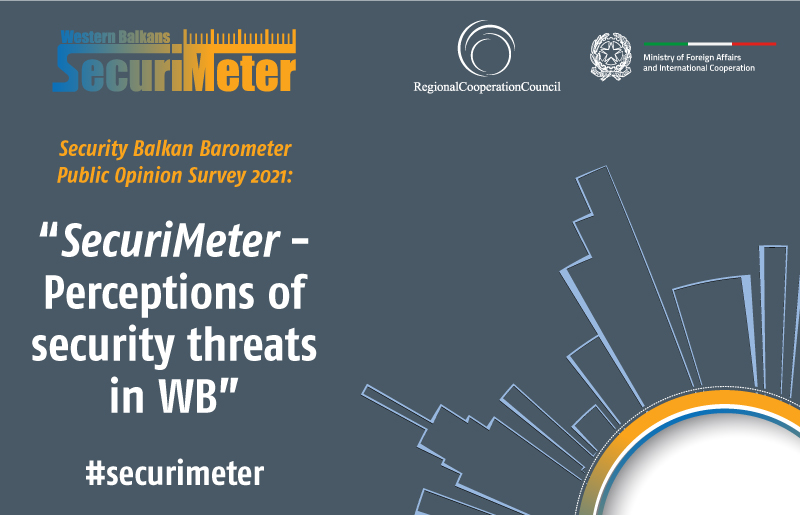- Home/
- News
Rethinking Counterterrorism Strategies for Facing the Far-Right and Islamic Extremism
The terrorist attacks occurring in the two decades since 2001 in various corners in the world raise serious questions about the features of violence and radicalisation. Common to all of the attacks is the lives they destroy, but the ideologies do differ and all require condemnation.
Understanding radicalisation is all about appreciating context and perspective. In some respects, radicalisation refers to pathways. In others, it relates to outcomes. Furthermore, radicalisation does not always equate with terrorism.[1] This lack of clarity over what radicalisation is leads to misunderstandings of violent extremism,[2] in particular where there is confusion over clearly problematic social outcomes that are not high priority security threats.
No two countries define ‘radicalisation’ in the same way. For some, violence is the main concern, with a focus on violent outcomes without much consideration for the radicalized ideologies that lead to it. For others, ideology that may or may not lead to violence is the primary focus, and this amalgamation of non-violent and violent forces that adhere to extremist ideologies creates its own problems. Nevertheless, all definitions recognise that radicalization is a highly individualised and largely unpredictable process.[3]
For the purposes of this article, radicalization refers to both the processes and outcomes of violent extremism. Based on this assumption, both Islamic extremism and far-Right extremism will be considered, with their fanatical ideologies intended to destabilize states and societies. Understanding the key foundations that drive these extremists will pave the way for a holistic strategy to facing down all kinds of extremist threats.
Similarities and Differences between Islamist Terrorism and Far-Right Terrorism
Western discourse places a lot of emphasis on political Islam as the key component of extremism, but the difference between far-Right extremism and Islamist extremism is minimal. Both are drenched in a conservative worldview, despising modernity, feminism, secularism, urbanity, and education, while loving violence, guns, militarism, theocracy, expansionism, and the nostalgia of a glorious past. They are essentially two sides of the same hyper-conservative coin.
During the last two decades, Western governments has focused their counter-terrorist efforts on the Islamist radicals, including Al-Qaeda and the Islamic State. However, homegrown extremists inspired by the groups became a more serious challenge. Years of conferences and outreach sessions commenced, with the focus remaining on the external jihadi threat, not the domestic white supremacist threat.
A neglect of the white supremacist movements as jihadism took centre stage, combined with the rise of a political divisiveness built on racial, religious, and ethnic grounds, has brought an unprecedented modern wave of domestic terrorism. For instance, an African-American church became the scene of a horrible atrocity in South Carolina. Mosques are attacked abroad and desecrated in the States. American synagogues in Pittsburgh and San Diego have become the site of mass shootings. White nationalist terrorism is on the rise.
The religious and ideological struggles in the Muslim world have attracted attention for many years, and now such things are appearing in the West. The far-Right movements in North America and Europe present many of the same narratives as those shown by radical Islamic groups.
Based on a discourse analysis of two related concepts, I will seek to explain the nature of the similarities and differences. The exclusivist and self-reinforcing narratives of the one group inspire the other. Policymakers need to understand far-Right and Islamist extremism as phenomena with shared local driving forces and impact.
Since the end of the Cold War, the Islamic world and Muslims in the West have come under greater scrutiny. Part of this has been negative, with political elites instrumentalizing local tensions for political gain. Islamophobia has to some degree become normalized. At the same time, the levels of frustration among certain young Muslim men lead to the point of no return, with them seeking imagined solutions in global projects lie the caliphate, which feed back to empowering the far-Right.
The far-Right is in large measure a reactive movement against Islamist-inspired terrorism. The centrality of Islam to the far-Right’s self-definition can be seen in the fact that many such groups and individuals — including Breivik — condemn traditional far-Right concepts like Nazism, fascism and antisemitism, instead defining their cause as a defense of their countries against a perceived threat from Islam.[4]
A significant proportion of ‘lone actor’ terrorists are, however, from neo-Nazi backgrounds, and there has been a relative underreporting of this menace.[5] A recent case that did not get as much attention as it might have done was Pavlo Lapshyn, a Ukrainian far-Right terrorist convicted for the murder of 82-year old Mohammed Saleem from Small Heath in Birmingham. Lapshyn confessed to killing Saleem because he was a Muslim.
Far-Right and Islamist extremism share basic mechanics in the process of radicalization, whether through the internet or otherwise. Both are violent forms on the fringe of a much broader movement, with links into the mainstream of their societies. There are no “lone wolves” among them; the attackers have at least a sense of solitary with communities, virtual or real, and often have direct collaborators and instructors. In a “manifesto” published online by the author of Christchurch attack, for instance, he stated that he was not a “direct member” of any group or organization, but had interacted with them and took inspiration from many of them — and he in turn has now provided the inspiration to several recent attacks.
Another shared element is the belief that “resistance” to despotism is an obligation. Islamist militant thinkers say rulers or regimes should be overthrown if they stand in the way of the rule of the enlightened and faithful. Far-Right extremists also see the government as the oppressor of their imagined community, defined by “race” and sometimes faith, the authority of which should be rejected and sometimes fought.
Both Islamists and the far-Right believe “their” communities are facing an existential threat, placing an obligation on the individual to fight back. For the Islamists, the belief that a belligerent West has been set on the humiliation and exploitation of the world’s Muslims for the best part of 1,000 years is axiomatic. In this context, responses to Christchurch attack are symptomatic of the cumulative radicalization between radical Islamism and extreme-Right. Both ideologies use the other’s behaviour to legitimize and reinforce themselves and their vision of a clash of civilizations between Islam and the West.
Understanding Radicalization’s Roots: the First Way to Counter Terrorism
White nationalist terrorism and political variants — embracing racism, antisemitism, anti-immigration, and anti-government sentiments — have existed in the United States, the United Kingdom, France, Germany, Italy, and Australia among other countries for decades. The difference is that in the past these acts were mostly isolated, intermittent of violence. Today, however, the Internet and social media are capable of uniting disparate, dissatisfied individuals, and providing a platform where radicalized individuals can inspire, goad, and otherwise motivate one-another into perpetrating acts of violence, as we have recently seen.
Five years ago, for instance, when U.S. law enforcement agencies were asked to identify the most serious violent extremist threats they faced in their respective jurisdictions, they cited far-Right, anti-government extremists, followed by Salafi-Jihadists, radical environmentalists, and then racialist extremism. But, given the rise of violent white nationalism and far-Right extremism, and the power of 21st-century communications platforms, the threat is evolving rapidly. The relevant authorities in the Western countries need to be fully knowledgeable about these dangerous advances in radicalization and recruitment, the ease of exchanging operational and attack information, and the indicators that can facilitate intervention, prevention, and hopefully the thwarting of future terrorist incidents. Additional intelligence sharing, training, and education to keep pace with this dynamic, unfolding threat is needed. Indeed, immigrants and citizens alike need to be confident that those charged with their protection are thoroughly versed and capable of effectively responding to this threat.
The far-Right and the Islamic extremism, as we have seen, are two sides of the same coin, feeding off each other. Limiting one will invariably reduce the other. Greater understanding of the linkages, interactions, and symbiosis between these two oppositional but related forms of extremism is crucial going forward.
_______________________________________________________
REFERENCES
[1] Randy Borum, ‘Radicalization into Violent Extremism I: A Review of Social Science Theories’, Journal of Strategic Security (Vol. 4, No. 4, 2011), 7-36. [10] Mark Sedgwick, ‘The Concept of Radicalization as a Source of Confusion’, Terrorism and Political Violence (Vol. 4, No. 4, 2010), 479-494
[2] Toby Archer, ‘Breivik’s Mindset: The Counterjihad and the New Transatlantic Anti-Muslim Right’, in Max Taylor, P. M. Currie and Donald Holbrook (Eds.), Extreme Right-Wing Political Violence and Terrorism (London: Bloomsbury, 2013), pp. 169–86.
[3] Gavin Bailey and Phil Edwards, ‘Rethinking ‘Radicalisation’: Microradicalisations and Reciprocal Radicalisation as an Intertwined Process’, Journal for Deradicalisation (No. 12, 2016), 255-281.
[4] Toby Archer, ‘Breivik’s Mindset: The Counterjihad and the New Transatlantic Anti-Muslim Right’, in Max Taylor, P. M. Currie and Donald Holbrook (Eds.), Extreme Right-Wing Political Violence and Terrorism (London: Bloomsbury, 2013), pp. 169–86.
[5] Daniel Koehler, ‘Right-Wing Extremism and Terrorism in Europe: Current Developments and Issues for the Future’, Prism: a Journal of the Center for Complex Operations (Vol. 4, No. 2, 2016), 84-104.
Author: Dr. Mohammed Issam Laaroussi, Researcher at TRENDS (Abu Dhabi)
Source: Link



 Development of specialized PCVE web site is funded by EU FUNDS CN 2017-386/831 - "IPA II 2016 Regional Action on P/CVE in the Western Balkans"
Development of specialized PCVE web site is funded by EU FUNDS CN 2017-386/831 - "IPA II 2016 Regional Action on P/CVE in the Western Balkans"